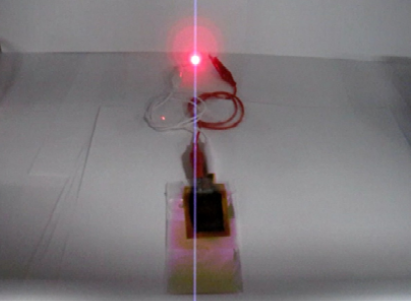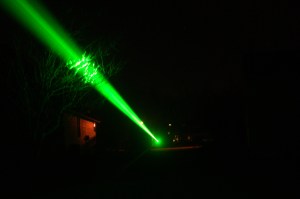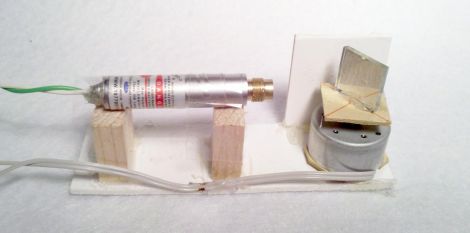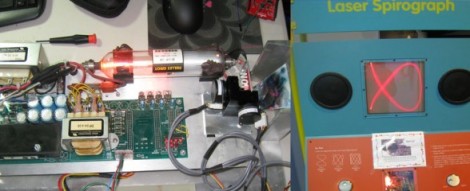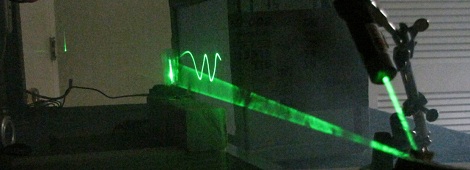
Readers of Hackaday may have noticed the weekly posts featuring whatever [Dino Segovis] of Hack A Week has cooked up in the last seven days. For [Dino]’s one-year anniversary, he’s pulled out all the stops and put together one of his coolest hacks to date. It’s a laser oscillograph that projects waveforms on a screen just like an oscilloscope. What’s more, the entire contraption is built out of a dead hard drive and a few motors and mirrors [Dino] had lying around.
The build uses an old hard drive to draw the vertical component of the waveform. Because hard drives usually use a voice coil to move the heads around the platter, it’s very easy to connect a hard drive directly to the headphone output of [Dino]’s laptop. Playing a sine wave on his computer makes the drive heads move up and down, but [Dino] still another dimension. For that, he used a rotating mirror that reflects the wave onto a paper screen.
[Dino]’s finished build isn’t that much different from an oscilloscope or projection TV. It’s possible for [Dino] to improve upon his build and make a genuine vector display with the addition of additional electronics and optics, but we’re not expecting that until at least the two-year anniversary.
Check out [Dino]’s build video after the break.
Continue reading “[Dino]’s One-year Extravaganza Is A Laser Oscillograph”

